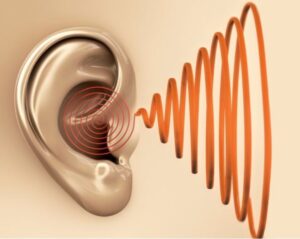When designing a ventilation system, it is often as important to meet acoustic requirements for the system as it is to meet requirements for air flow and pressure. We see this a lot when we are designing ventilation systems for gas pipeline compressor stations. The specifications for the station will often provide a maximum decibel level at some distance from the building. Our responsibility is to make sure that the ventilation equipment we select will meet the maximum decibel limit when combined with sound originating from other equipment, such as the compressor inside the station. In the first of a three part series, I’ll review the science of sound behind the acoustic calculations that we perform to check to make sure that we are meeting the acoustic requirements.
Science of Sound
There are four key terms that we will use in our acoustic calculations:
Sound Pressure Level: Measurable sound is a change in pressure relative to atmospheric pressure caused by a sound wave. The unit of measure for sound pressure level (SPL) is the decibel (dB), named after Alexander Graham Bell. The dB is the smallest SPL change detectable by the human ear. Decibels are measured on a logarithmic scale where an increase in 10 dB represents a 10 fold increase in the SPL.
 Divergence: The measurable SPL originating from a source decreases as the distance from the source increases and that phenomenon is referred to as divergence. For every doubling of the distance from a sound source, the SPL decreases by 6 dB.
Divergence: The measurable SPL originating from a source decreases as the distance from the source increases and that phenomenon is referred to as divergence. For every doubling of the distance from a sound source, the SPL decreases by 6 dB.
Octave Bands: It is common for frequencies, at which SPLs are measured, to be broken up into small ranges called bands. On the most basic scale there are 8 bands, hence “octave.” For our acoustic calculations, the octave band used has these frequencies: 63, 125, 250, 500, 1000, 2000, 4000 and 8000 Hz.
 A-Weighting: Although dB is commonly used when referring to measuring SPL, humans do not hear all frequencies equally. The human cochlea responds best to frequencies in the range of human speech. It doesn’t respond as well to frequencies that are much higher or lower. For this reason, SPLs in the low frequency end of the spectrum are reduced as the human ear is less sensitive at low audio frequencies than at high audio frequencies. To adjust the SPLs to get a better idea of the sound that can damage human hearing, an A-weighting scale is applied to the octave band that we use (see the table below). The adjusted SPLs in decibels with the A-weighting applied are referred to as dBA.
A-Weighting: Although dB is commonly used when referring to measuring SPL, humans do not hear all frequencies equally. The human cochlea responds best to frequencies in the range of human speech. It doesn’t respond as well to frequencies that are much higher or lower. For this reason, SPLs in the low frequency end of the spectrum are reduced as the human ear is less sensitive at low audio frequencies than at high audio frequencies. To adjust the SPLs to get a better idea of the sound that can damage human hearing, an A-weighting scale is applied to the octave band that we use (see the table below). The adjusted SPLs in decibels with the A-weighting applied are referred to as dBA.

In part 2 of this series, I’ll go through the acoustic calculations using a project that we recently worked on for a gas pipeline station.
